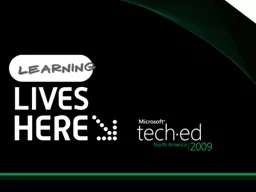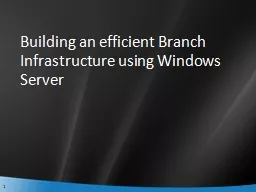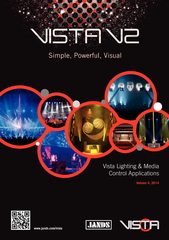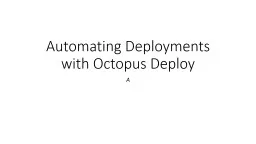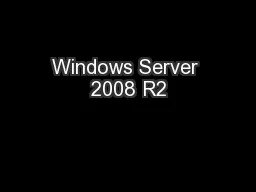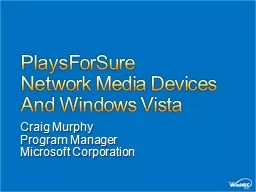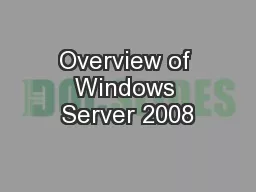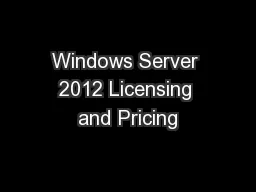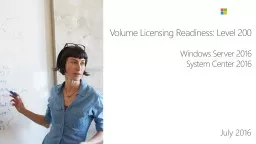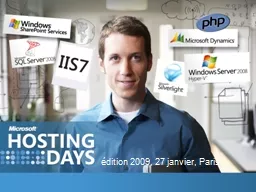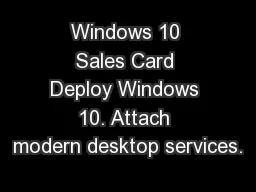PPT-Licensing Your Windows Server 2008 and Windows Vista Deploy
Author : cheryl-pisano | Published Date : 2016-06-28
Kalpesh Patel Senior Lead Program Manager Microsoft Session Code WSV314 Sean Deuby Senior Enterprise Solution Strategist Advaiya Agenda Session Goals Volume Activation
Presentation Embed Code
Download Presentation
Download Presentation The PPT/PDF document "Licensing Your Windows Server 2008 and W..." is the property of its rightful owner. Permission is granted to download and print the materials on this website for personal, non-commercial use only, and to display it on your personal computer provided you do not modify the materials and that you retain all copyright notices contained in the materials. By downloading content from our website, you accept the terms of this agreement.
Licensing Your Windows Server 2008 and Windows Vista Deploy: Transcript
Download Rules Of Document
"Licensing Your Windows Server 2008 and Windows Vista Deploy"The content belongs to its owner. You may download and print it for personal use, without modification, and keep all copyright notices. By downloading, you agree to these terms.
Related Documents

